There's no place like Rome
I originally arrived from Switzerland on the night train, which I shared with a massive posse of football fans coming in to attend a Champions’ League match between Roma and FC Basel. They took up nearly the entire platform and much carriage space, making lots of noise with drinking antics. It was going to be the longest train journey of my life so far and didn’t get off to a good start when the bearded attendant shouted in my face that I needed to have a reservation or pay a supplement fee. I didn’t have quite enough cash for the full amount, but thankfully he appreciated the situation and let me off a few Euros.
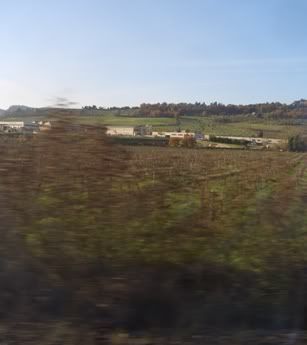
The next morning, after sleeping in a compartment with two Basel supporters who didn’t really say much, I spent most of the time staring out of my window at the Italian countryside, thinking about how different this would be to what I expected was coming up in Rome.
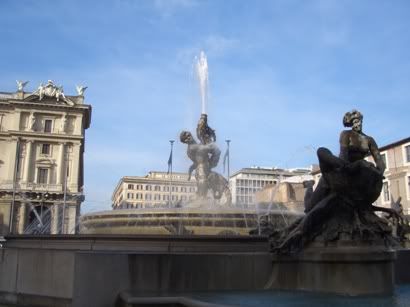
This was a correct prediction. As soon as I walked outside into the unseasonably sunny weather, after many complications trying to find the tourist information and deposit my backpack, I was hit by the impressiveness of the city. First on my agenda was to eat, so I bought something and went to sit by a fountain in the middle of a traffic roundabout near the station. It had a spectacular design, but what caught my eye more was the amount of people sitting around doing nothing in particular. Throughout my time in Rome I noticed a lot of beggars and unemployed people on the streets; something needs to be done to help them out of these unfair living circumstances, they can’t just be left as they are.

Historical grandeur is commonplace in Rome’s central areas. Ancient ruins were illuminated stunningly by afternoon sunlight and my next target was the Tomb of the Unknown Soldier, a very sacred area. Outside the gates there are signs with rules for entry, which include no eating or sitting down and a condition of general respective behaviour. Two soldiers stand silently motionless on either side of the tomb itself, with never-ending rotational cycles so it is always guarded.
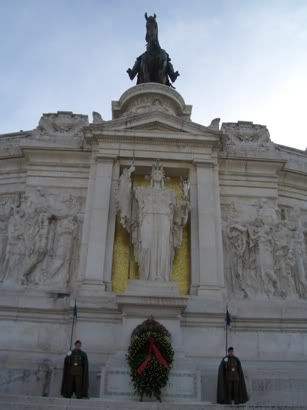
Gradually I walked up the giant monument’s endless steps, with each level adding another dimension to the truly awesome views over Rome. I could quite easily have spent all day there, staring down and watching the world go by, but instead settled to take lots of pictures and move on towards the Coliseum.
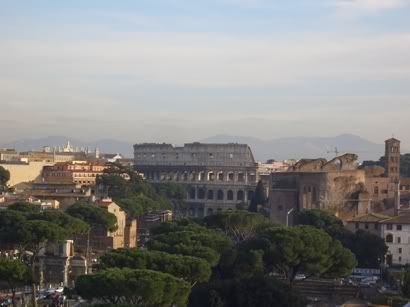
There is a very clear law of the highway in Rome, based on a system of hierarchy. At the top are the cars, famous for their Italian parking methods, and large vehicles like buses and vans. Next are motorbikes and mopeds, nearly equal in number to the cars, which can appear from nowhere at any time, rapidly weaving their way through traffic and other assorted obstacles. Right at the bottom are pedestrians, forced to face a combined assault from the two other main groups in order to cross a road – even if there is a set of traffic lights. Speaking of which, it was amusing to observe that the red light was notably bigger than the other two, but I don’t know how effective this is. I was quick to learn that, in order to get anywhere fast, people on foot need to be brave and challenge the traffic – otherwise you could be waiting forever for any driver to stop out of courtesy and let you by. Similar to Prague, green lights at zebra crossings barely last ten seconds so that doesn’t exactly help.
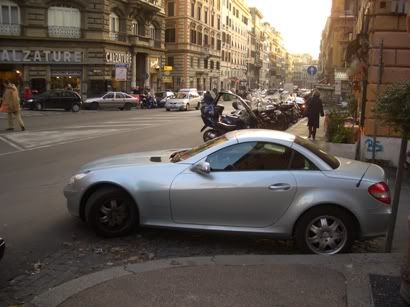
As for public transport, it seems like a pretty efficient system. The train coverage is quite limited, with carriages covered in graffiti, but buses fill the gaps and make the city accessible. But you’ve got to watch out for pickpockets and bagsnatchers, both on transport and in the streets: it can become pretty crowded so keep hands near to valuables.
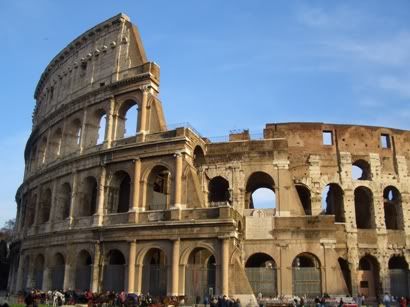
I didn’t actually go inside the Coliseum, for the good reason that it has been divided up into three sides with a separate fee for each. Now if that’s not a blatant scam to manipulate tourists I don’t know what is. The Vatican wasn’t much better; we could enter all the main buildings free of charge, as I would expect in a religious institution when worshippers need to get in, but in order to see other rooms additional charges apply. I managed to cope with this limited access, however, and there’s always next time to see the rest of it.
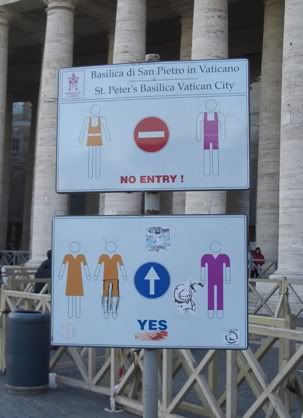
Vatican regulations are quite strict: sufficient clothing must be worn to enter the building, which means no bare arms or legs far above the knee. Swiss guards are on the lookout in case anyone violates these, although I don’t know what they can really do aside from kicking you out. Architecturally, both exterior and interior were great to look at and I even got to see part of a service taking place inside one of the big churches.
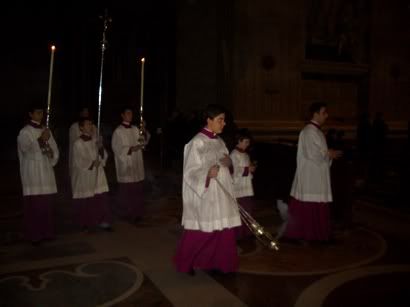
Pickpocketing is a big problem in Rome as well, so I wasn’t surprised to see lots of police around. Apparently trading in artificial designer garments is illegal, so it was strange the police weren’t all over street sellers. There were a couple of officers standing by the Trevi Fountain – I’ve read that a lot of people try to steal money thrown into it, which can accumulate to high amounts during tourist season.
That was a beautiful landmark, but I was disappointed by the famous Spanish Steps. They are situated in one of the most popular shopping areas and this was clear from the larger-than-life Versace poster hideously looming over them. It would have looked a lot better if left untouched, I don’t like commercialisation spoiling history and heritage.
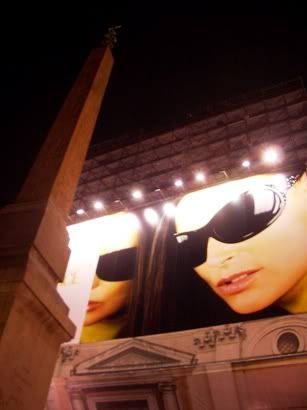
Unfortunately this also applies to the souvenir industry in Rome. Nearly all the useless dust-collecting items you could possibly imagine are available and can be found both in streets and shops. A favourite of mine was the series of multicoloured flashing glass laser engravings showing all the main landmarks. One aspect of the whole thing I greatly detest is the religious trinket strategy. In the Vatican and surrounding area it became quite ridiculous to see how people’s faith was being manipulated to make money from selling Catholic-themed garbage.
On the night I was with a group of people who had attended the OBESSU convention, we were treated to one of the world’s best ever waiters, a man named Orlando. He was a little extravagant and spontaneous, but friendly and charismatic at the same time. Unlike many Italians he also spoke decent English, something I suppose is pretty important working in a job like that.
Moving onto the wider point of language, I was actually quite surprised at the amount of people who seemed only to know Italian. Representatives of UDS in Campobasso were always complaining about the state of their education system and now maybe I can see why. Not that I automatically expect everyone to speak English or anything like that, I think this is a broad observation and applies with teaching of other languages as well. In, for example, Finland and Sweden, I found a lot more people could speak at least basic English, usually with another language as well – unsurprisingly these nations are renowned for good education, as is Scandinavia in general.
Something else which really surprised me was the presence of bats in Rome, which came out in large numbers at night. Near the ancient ruins we struggled to work out what the noise was – too loud to be insects and too late in the day to be birds. Only when approaching Termini station did we realise what it was: we could see their shadowy outlines fluttering between treetops. I’m really interested to know where they go during the day, because there aren’t many caves or cavernous dark places around.
Was Rome how I expected it to be? The answer is probably yes, but there were many surprising things as well. I did anticipate wonderful historical attractions, a hotbed of tourism and the resulting omnipresent emphasis on commercial business, but to witness the way some services are run was quite disappointing. In order to simply send postcards I was required to stand in a queue for about ten minutes – and that was at a quiet hour. The economic situation seems to be worse than I first thought as well, especially for a capital city.
I know I’ve been a tourist myself for these few days, but there was so much to see and still more remains for next time – although I think it’s wise to avoid high season. I can quite easily imagine the city being jam-packed with foreigners and tourism taking over. There were several buildings which contained five or more hotels, spread out on different levels, and when these are all full up things must get a little crazy. This must be vexing for residents of central Rome; despite the fact I’m from London, living in the suburbs means I’ve never been exposed to the legions of visitors on a daily basis.
My mini-tour of Italy has three more stops. I spend one night in Florence before moving on to Venice for a day and then Trieste, where I will stay with a friend for two nights. Can’t wait to see Venice especially, it’s such a celebrated place and seeing TV shows about it just made me want to go even more. Florence also has a global reputation for its splendour. The thing about Italy is that it’s a country with so many unique cities. There are so many destinations I can say I’d like to visit; sadly it’s not possible to see them all in such a short time, but this is a good start.





0 Comments:
Post a Comment
<< Home